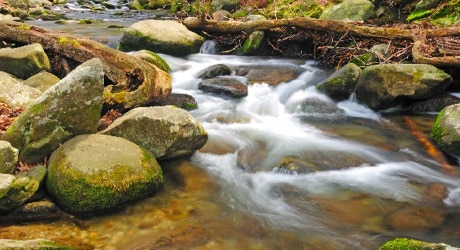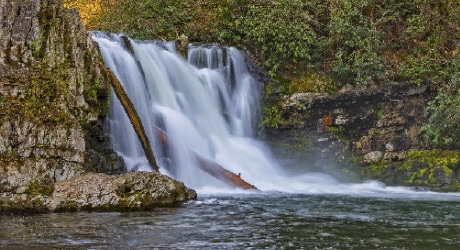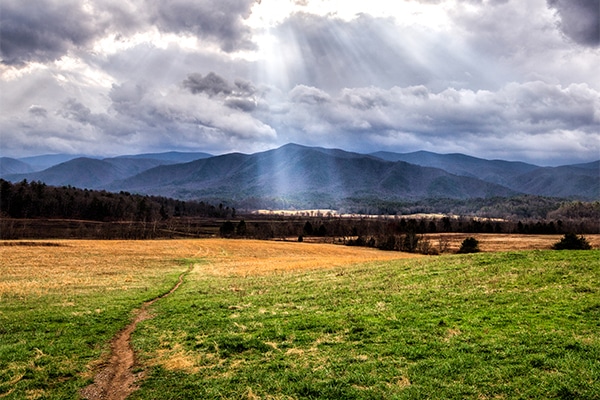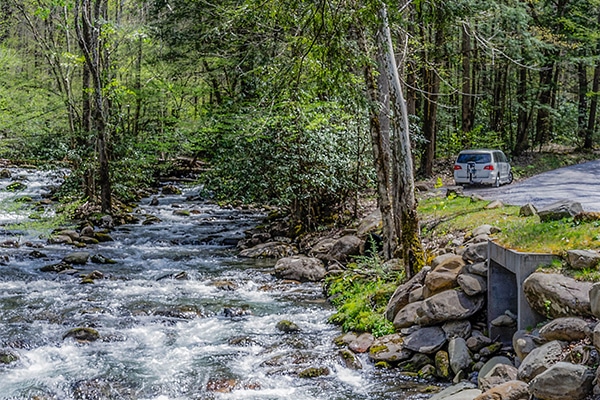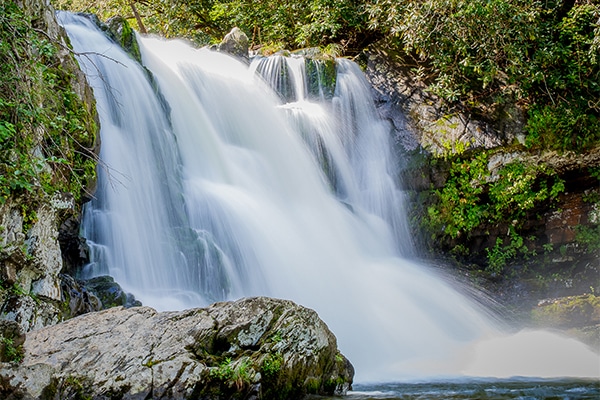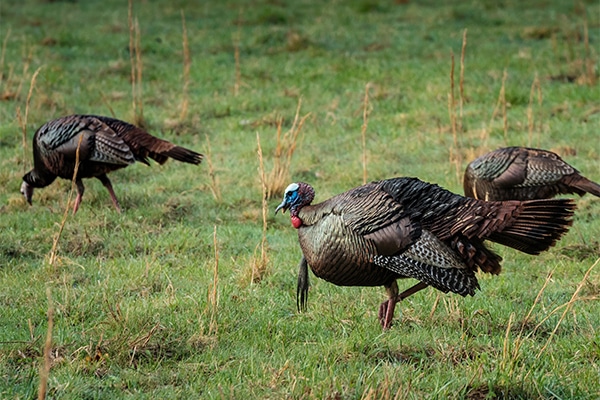FISHING IN THE SMOKY MOUNTAINS
Great Smoky Mountains National Park offers visitors and locals alike an abundance of opportunities to enjoy the great outdoors. For those that enjoy spending time on the water, relaxing and casting a line, you’re sure to enjoy a visit to the Smoky Mountains.
Fishing in the Smoky Mountains is a time honored tradition that has been occurring for centuries. Before the arrival of European settlers, the waters were fished by the native Cherokees. Since the creation of the national park in the 1930s, millions of fishermen have continued this tradition.
Great Smoky Mountains National Park is home to more than 2,900 miles of streams, with nearly 600 miles of those streams containing fish. The park is also home to one of the last wild trout habitats within the Eastern United States. Fishing experiences within the national park range from remote, headwater trout streams to large, coolwater smallmouth bass streams
TROUT FISHING IN THE SMOKY MOUNTAINS
Great Smoky Mountains National Park offers year-round fishing opportunities for a variety of wild trout species. Wild trout found in high elevation, soft-water streams include Rainbow and Brook trout, which are typically smaller (<10 inches) fish, and wild Brown trout which can grow to nearly 20 inches in length.
Best park streams for wild trout fishing: upper part of Abrams Creek (accessible by driving half way around the loop road in Cades Cove)
BASS FISHING IN THE SMOKY MOUNTAINS
Other angling opportunities within the national park include smallmouth bass, which are found in the large lower elevation streams including the first few miles of the West Prong of the Little Pigeon River and within the first mile of streams flowing into Fontana Lake near the park boundary. Fish as large as 2 to 3 pounds are commonly caught by anglers.
Best park streams for smallmouth bass fishing: East Prong of Little River (from where it enters the park near Townsend to the Sinks) and Abrams Creek (from its embayment with Chilhowee Reservoir to Abrams Falls).
FISHING REGULATIONS AND LICENSES
The following regulations must be observed by those fishing within the boundaries of Great Smoky Mountains National Park.
- Fishing is permitted year-round, from 30 minutes before sunrise until 30 minutes after sunset.
- Fishing is allowed within all streams of the national park.
- Pick up a free list of fishing regulations and map of fishable waters at any ranger station or visitor center such as Sugarland’s Visitor Center.
Daily Possession Limits
- Five (5) brook, rainbow or brown trout, smallmouth bass, or a combination of these, each day or in possession, regardless of whether they are fresh, stored in an ice chest, or otherwise preserved. The combined total must not exceed five fish.
- Twenty (20) rock bass may be kept in addition to the above limit.
Size Limits
- Brook, rainbow, and brown trout: 7 inch minimum
- Smallmouth bass: 7 inch minimum
- Rockbass: no minimum
Lures, Bait, and Equipment
- Fishing is permitted only by the use of one hand-held rod.
- Only artificial flies or lures with a single hook may be used. Dropper flies may be used. Up to two flies on a leader.
Tennessee License Requirements
- Residents and nonresidents age 13 and older must have a valid fishing license or permit to fish in Great Smoky Mountains National Park. Residents age 65 and older may obtain a special license from the state. No trout stamp is required.
- Fishing licenses may be purchased online from the state government of Tennessee or at one of the local businesses in Pigeon Forge.
- For more information on rules and regulations or on streams that might be closed to fishing visit the National Park Service fishing page for how to plan your visit.
Visit our Smoky Mountains page for more information about the park and other things to do while visiting Pigeon Forge.

